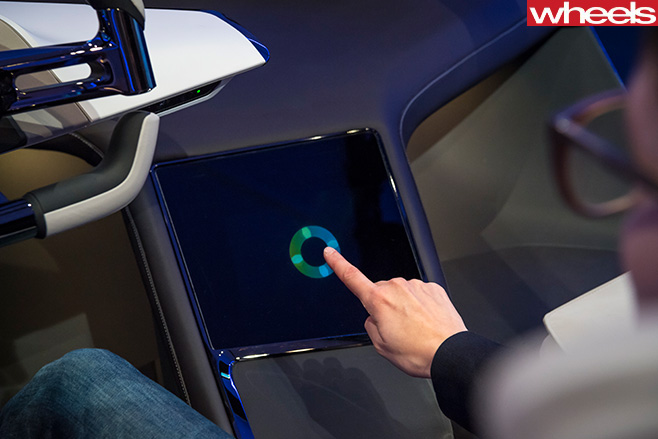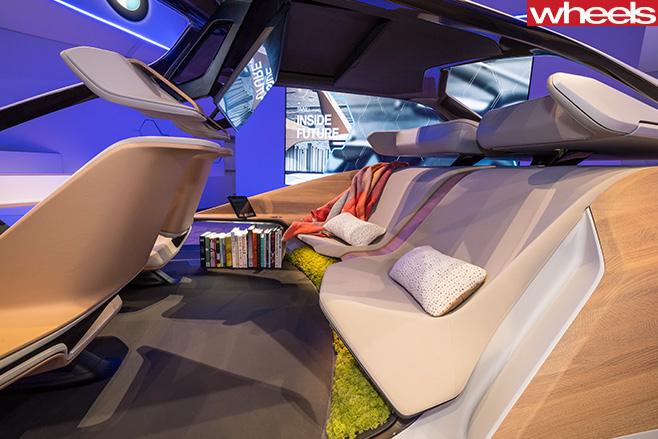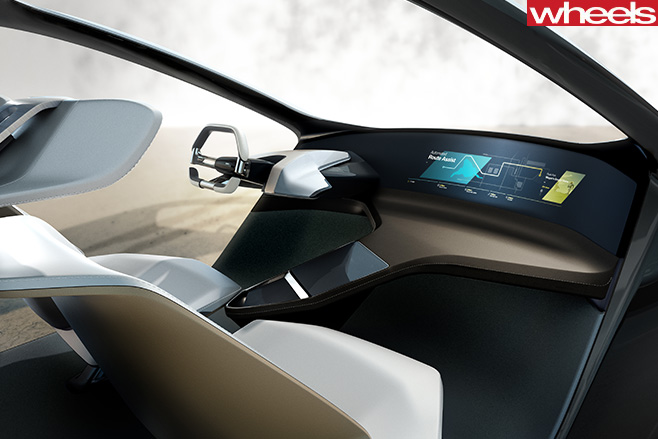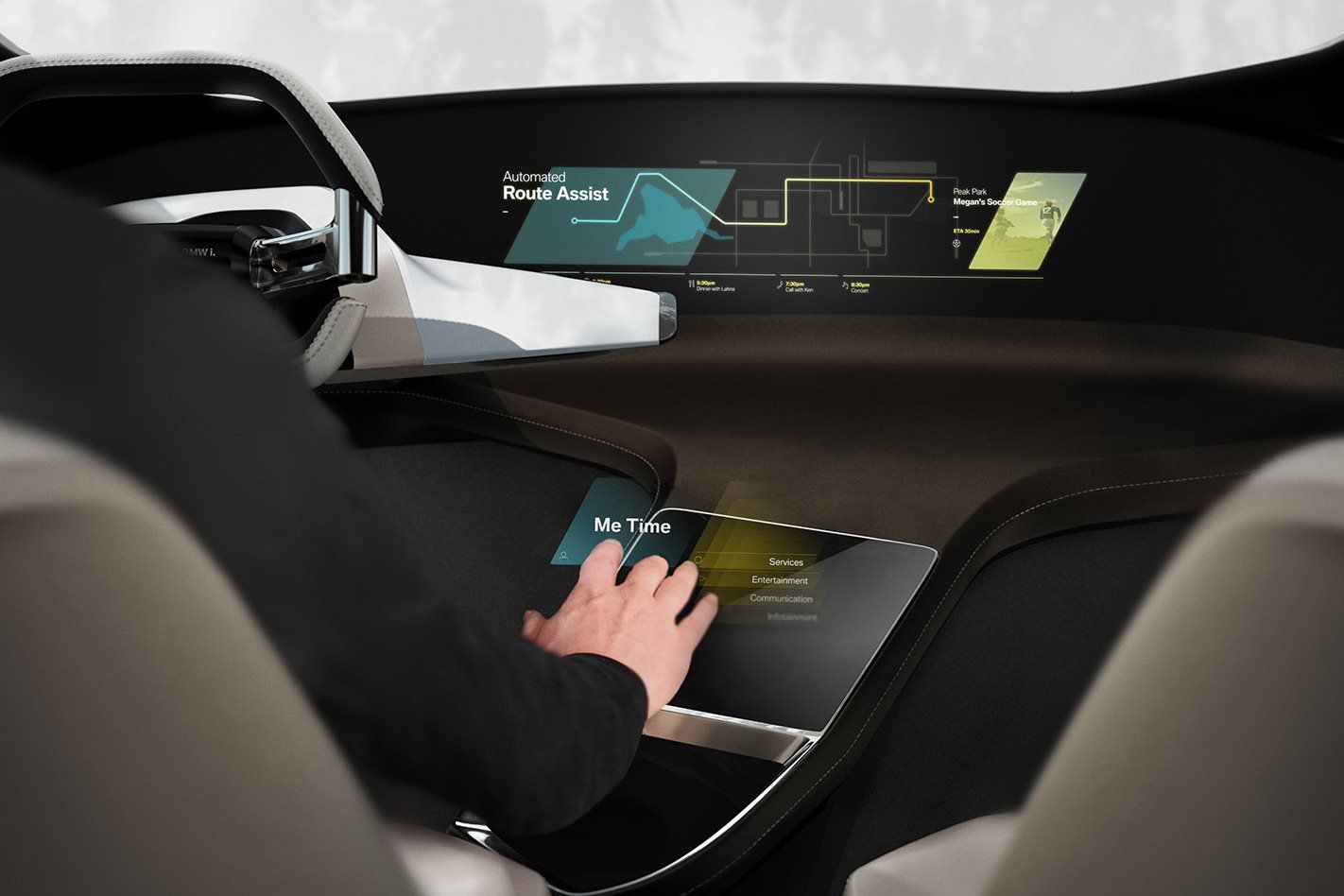In the future, nothing has buttons. It’s all touchscreens and, in BMW’s case, holograms.
BMW’s i Inside Future concept car is a long way from reality, but the HoloActive Touch system it debuted at the Consumer Electronics Show (CES) in Las Vegas is already functional.
A full-colour image is projected R2D2-style into thin air above the centre console, aimed toward the driver. It displays floating buttons controlling a huge door-to-door dashboard display. The most unusual thing about it is a type of haptic feedback, developed so users can feel the hologram as they touch it.
It works using an array of 300 ultrasonic speakers in a panel beneath the hologram. An infrared camera detects the position of the driver’s finger as it presses the air, and a jet of sound is shot at the fingertip to acknowledge the input. It’s a bizarre sensation, similar to a static pulse. The tone can’t be heard by ear but it is picked up in the video above.

Most of the functionality is smartphone linked for receiving calls or playing music and video. In the future BMW says it could project anything from a volume control with haptic feedback for each click of the dial, to paddle shifters, or even the steering wheel itself.
HoloActive Touch is an evolution of the relatively primitive gesture control system currently found in BMW 7 Series. BMW strongly believes that gesture-based systems are the future.
“Being in your direct reach, we think it is such a natural way of interacting with the car,” said Sonja Rumelin, technical expert HoloActive Touch. “Now you are touching something, so it is a mixture of the gestures you normally do and the gestures which have become intuitive from using touchscreens.

Living room experience refers to the concept’s open design, with a minimal console and a dashboard mounted much further away than is typical. The holographic image is created using micro mirrors and glass prisms to reflect an LCD display mounted behind a panel in the low centre console, similar to a regular heads-up display.
“It’s like learning a new language. Once you have it and you start using it, it’s seamless. Then you get into another car and you start waving your hand and realise it doesn’t have it,” said BMW North America spokesman, Hector Arellano-Belloc, speaking to Wheels.

Other features in the BMW i Inside Future concept include a function called Sound Curtain. Using speakers in the headrests, an isolated area of sound is created around the passengers, so that each can listen to their own audio without disturbing others.
New materials have been used around the car, inside and out, for their ‘functional properties’, including a garden bed of moss under the rear seat for its climate benefits, and a cork floor to help with acoustics.
“We don’t want to put new materials just because, it has to make sense,” said Rumelin.





